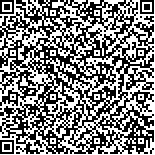下载中心
优秀审稿专家
优秀论文
相关链接
摘要

积雪深度是大量气候、水文、农业及生态模型的重要输入变量。选用欧空局Sentinel-1主动微波数据,利用合成孔径雷达SAR(Synthetic Aperture Radar)差分干涉测量技术的二轨法,根据积雪相位与雪深之间的转换关系,反演新疆天山中段的巴音布鲁克盆地典型区的积雪雪深分布,提出了基于InSAR二轨差分的雪深估计方法,反演得到2016年12月18日的空间分辨率为13.89 m的雪深分布。研究表明:(1)对Sentinel-1数据进行正确的预处理以后,可以应用SAR差分干涉测量技术的二轨法反演区域雪深分布。但由于像对相干性和积雪状态的差异,积雪深度超过10 cm,可以获取较准确的雪深反演结果,R=0.65,反演误差的均方根误差RMSE=4.52 cm,平均相对误差为22.42%,反演雪深结果均比实测结果略偏低;而当雪深小于10 cm时,雪深反演值较实测值存在较大的误差,相对误差均高于34.52%,且反演雪深值均比实测值偏高。(2)雪深反演精度受高程及实际雪深的差异影响显著,另外雪深反演精度也受限于干涉像对相干性。结果表明,对于获取区域积雪雪深,InSAR技术较光学及被动微波遥感具有非常广阔的应用前景。
关键词:
雪深 Sentinel-1 D-InSAR 误差分析 相干性Snow depth is a general input variable in many models of agriculture, hydrology, climate, and ecology. This study adopts the Sentinel-1 C-band of the European Space Agency using the two-pass method of differential interferometry to conduct an inversion study of the snow depth distribution in typical areas of Bayanbulak Basin in the Middle Tianshan Mountains of Xinjiang, China.
Based on Sentinel-1 SAR image, the image of day October 31, 2016 is selected as the master image and the image of day December 18, 2016 is used as the slave image to form the image pair. After the interferogram is formed, the orbit phases, terrain, ground effect, and noise effect are removed. The phase unwrapping of the remaining phase aims to obtain the distribution of snow depth with the spatial resolution of 13.89 m on day December 18, 2016 by relying on the relationship between snow depth and snow phase in the typical Bayanbulak region.
The study demonstrates the following:(1) After proper preprocessing of Sentinel-1 data, snow depth distribution inversion is achieved by utilizing the InSAR-based two-pass method. However, owing to the difference of image-pair coherence and snow accumulation conditions, a relatively accurate inversion result of snow depth is available when the snow depth is larger than 10 cm (R=0.65, RMSE=4.52 cm, and average relative error is 22.42%). The estimated snow depth is slightly lower than the actual depth. When the snow depth is less than 10 cm, the inversion result is not accurate:it is larger than the actual depth, and the average relative error is higher than 34.52%. (2) The inversion accuracy of snow depth is also significantly influenced by the height and actual snow depth. Moreover, the inversion result of snow depth is influenced by coherence losses.
This study demonstrates that the InSAR method is more promising in obtaining and estimating snow depth compared with optical technology and passive microwave remote sensing.

